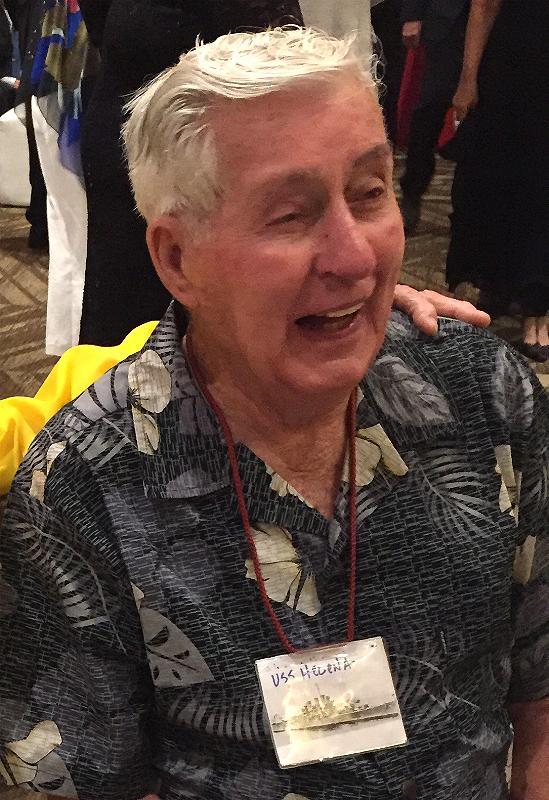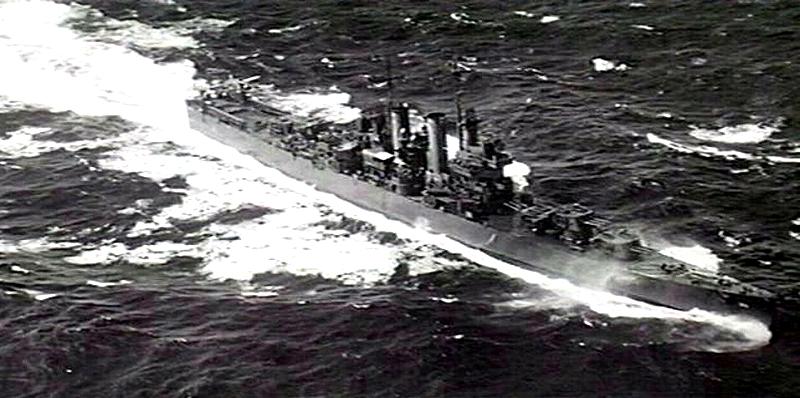

|
|
In November 1942, Helena became the first US Navy ship to be awarded the
The second Helena (CL-50), was launched 27 August 1939 by the New York
Within 3 minutes of the time the first bomb of the attack fell on Ford Island, a lone 
Shipmate David A. Thomas, served on the USS Helena CL-50.
He was assigned to the 2nd Division as a Seaman 1st Class

The USS Helena (CL-50) underway on 5 March 1943
USS Helena (CL-50) was a St. Louis-class light cruiser of the United States Navy.
Completed shortly before World War II she was damaged in the attack on
Pearl Harbor, and participated in several battles in the Pacific War She was
sunk by three surface-fired torpedoes at the battle of Kula Gulf in 1943.
She was one of three U.S. light cruisers to be sunk during the war.
Navy Unit Commendation medal.
Navy Yard; sponsored by Miss Elinor Carlyle Gudger, granddaughter of
Senator Thomas J. Welch of Montana; and commissioned 18 September 1939,
Captain Max B. Demott in command. Helena, assigned to the Pacific Fleet,
was at Pearl Harbor on 7 December 1941, when the Japanese attacked.
She was moored at 1010 Dock Navy Yard on the east side of the harbor; outboard
was minesweeper Oglala. By chance Helena was in the berth normally assigned to
Pennsylvania; and this became a prime target for the Japanese planes.
torpedo plane launched a torpedo that passed under Oglala, and hit Helena on the
starboard side almost amidships, just as the crew raced to battle stations. One
engine room and one boiler room were flooded. Wiring to the main and 5-inch
batteries was severed, but prompt action brought the forward diesel generator up
within 2 minutes, making power available to all mounts. Immediately, they
sent up a heavy fire that keep her free of further damage. Outstanding damage
control work, and the fact that watertight integrity was promptly insured by the
closing of the doors and hatches throughout the ship, kept Helena afloat. Many
times later she gave the Japanese occasion to regret their failure to sink her
that first day of the war.